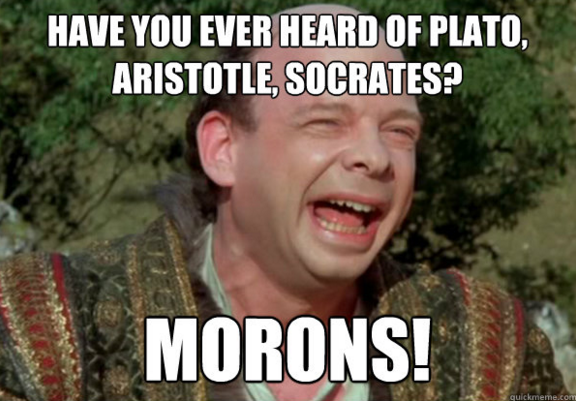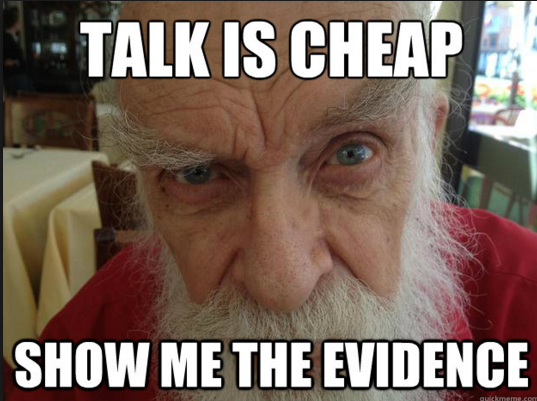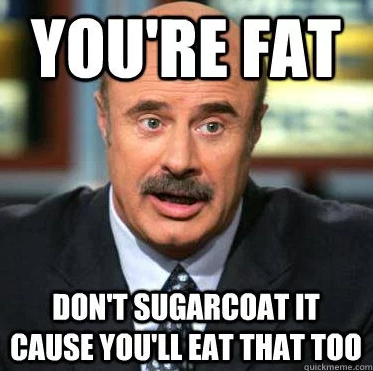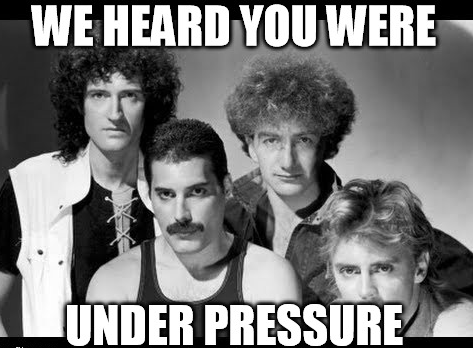

Image courtesy of Kevin Wood via Flickr Creative Commons
Character building is essential for telling stories that readers a) can’t put down and b) will never forget. Why am I now talking about character building, since I know I have a reputation for focusing a lot of blogs and classes on story structure?
Stories, like other complex creations, are comprised of multiple parts. If we build a car, the body of the actual vehicle is essential. Everything else will attach to that frame, either inside or outside.
Regardless how innovative and imaginative the frame, I’d argue the engine is a pretty big deal or we’re left with a very large and expensive paperweight, doorstop, or garden planter.
When it comes to designing a car, we won’t get too far without wheels, and brakes might be a good idea as well. Yet, choosing a leather interior or cloth or what color the car might be? Not high on the priorities about making the car actually WORK.
Structure is the delivery system/engine of story. If we keep starting, stopping, flashing back, including too many POVs that aren’t salient to the overall tale? The reader is likely to finally get frustrated and give up.
While structure might be the frame and the problem the engine, is it driving anything (story) or anyone (characters) interesting?
Study & Character Building


I put in a lot of work and study when it comes to honing my writing skills. This means I’m always searching for ways to become a stronger author and craft teacher.
Want to get better at anything? Look to those who are the best at what they do and pay close attention. The best way, and a requirement for anyone in the writing profession, is to read…a lot.
I read a ridiculous amount of fiction. Since I have little time to actually sit and read for long periods of time, I’ve had to retrain my brain for audiobooks. Audiobooks are a life-saver, since life didn’t decide to suddenly pause because I wanted to be a writer.
***My dishes and laundry are apparently in control of cloning-technology they refuse to share.
This said, however, I listen to an absurd amount of books in virtually all genres and use this as training. When I encounter a superlative character? I usually buy the paper version then—like the monster I am—dog-ear, highlight, and make notes.
Studying other works offers an excellent education about character building for those willing to pay attention.
When you encounter a character that resonates, then ask why? What intrigued you? What made this particular character stand out/memorable? How did the author manage to do the same but different?
Characters of Note


I tend to go through binges in genres, though I believe my go-to favorite are mysteries. For instance, Sherlock Holmes is a character that’s been reimagined countless times and in varying forms largely because he’s incredibly unique and possesses seemingly endless depths for new authors to plumb.
After eating through all the Sherlock Holmes stories, I began searching for other detectives set in late 19th century London.
I fell in LOVE with Will Thomas’s Barker & Llewelyn Series.
Not only are the mysteries masterfully crafted, but Thomas has created such an incredible cast of characters that it’s hard not to get sucked into the entire series.
While he could have gone with a Sherlock/Watson knock-off (and plenty have), he took the template and created a crime-solving duo that was wholly fresh and new.
Thomas equipped Barker and Llewelyn with such intricate and idiosyncratic backgrounds (much shrouded in secrecy) that he crafted two characters unlike any I’ve encountered.
It is their SECRETS that provide the fuel for story, tension, and resonance. I kept reading because I wanted to know WHY Barker wore dark glasses and refused to show his eyes. How did a Scotsman come to be fluent in Mandarin and the master of so many unique fighting styles?
Why was Llewelyn sent to prison when he was a student at Oxford? How did he become destitute? Not all my questions were answered in one book. I had to keep reading to get to know the characters that so fascinated me.
Characters sold the stories, and eventually the entire series. I’d venture to say it’s why readers fall in love with series. Series give them a chance to know the characters better, understand them, and bond in a way that makes the final book feel like a death.
Character Creation


I thought back over works I’d edited, earlier stories of my own and had a moment of revelation. Why were some characters so flat? As interesting as some form-molded widget from a factory?
Conversely, what made other characters almost come ALIVE?
What was the X-factor?
Now that I’ve noodled this, I’ve revised some of my thinking. Multi-dimensional characters are not something writers can directly create. Rather, these lifelike people are forged from the crucible of story.
Dramatic writing uses a core problem (fire). The core problem generates escalating problems (the hammer). The trials (increasing heat/hammering) reveal, refine, define, and ultimately transform the narrative actors into characters.
Story alone holds the power to bestow resonance.
Character Building: Dangers of ‘Fill-In-The-Blank’ People
Character profiles can end up a lot like dating profiles…and about as helpful.
Height, weight, build, nationality, attractiveness, education level, how many kids, previously married, hobbies, etc.
Dating profiles also provide blank spaces for additional ‘deep, character-revealing statements’ such as: I’m not a game-player, love Mexican food, and my favorite activities are cross-fit and hiking.
FYI: ALL of that is likely a lie (other than enjoying Mexican food). Anyone who starts with I am not a game-player is almost guaranteed to be a game-player. It’s Shakespeare’s Rules of Romance. Or, as I call it, ‘The Lady/Dude Doth Protest Too Much’ litmus.
Anyway…
No School Like Old School


….or not.
Do I create character profiles? Sure. I also put a lot of thought and research into what ‘people’ I want to cast in a given story. It’s a great activity, but be careful. We can’t camp there. Activity and productivity are not synonymous.
Ultimately, fictional characters reflect the real human experience in a distilled and intensified form. This, however, doesn’t give an automatic pass on authenticity.
Aristotle might be Old School, but his observations regarding drama resonate even into the 21st century. In Aristotle’s Poetics he asserts:
Since the objects of imitation are men in action, and these men must be either of a higher or a lower type (for moral character mainly answers to these divisions, goodness and badness being the distinguishing marks of moral differences), it follows that we must represent men either as better than in real life, or as worse, or as they are. ~Aristotle
This gives three schools: Polygnotus (more noble), Pauson (less noble), and Dionysius (real life).


Even today these three schools of story thought are alive and well. Marvel’s Captain America movies proffer the larger-than-life hero, the man better than real men (Polygnotus).
Westworld and Game of Thrones provide a vast assortment of villains who are worse-than-life, an exaggeration of evil (Pauson).
Then, movies like Training Day or Glengarry Glen Ross show men as they really are…flawed. They’re not entirely noble or ignoble (Dionysis).
Granted, this is a vast simplification, but we can see novels fall into these schools as well. Genre dictates a lot of this. Harry Potter, The Girl With the Dragon Tattoo, and A Man Called Ove could reasonably be placed in each category.
Character Building: Talk is Cheap


Why do I mention these ‘schools’ of story? Depending on genre, readers will have expectations when it comes to what they’ll find entertaining. As writers, our primary job is to entertain.
This said, stories are for the audience. This means we need to either serve them what they enjoy, or serve them what they don’t yet know they will enjoy 😉 .
As a general ‘rule,’ readers who gravitate to stories like Suzanne Collins’ Hunger Games trilogy are fundamentally different than readers who prefer stories like Cormac McCarthy’s No Country for Old Men. What readers are looking for—regarding story and characters—will be specific to the genres they gravitate to.
What KIND of Story Do We Want to Tell?
It’s critical to define what kind/flavor of story we want to tell, because this first of all informs character building. Also, an idea can be delivered any number of ways (parodies prove this).
Telling a story audiences don’t yet know they will love must work with the boundaries of preference. Take the boundaries and push them or deliver them in a new, fresh way.
J.K. Rowling didn’t completely ignore reader expectations and preferences for YA fantasy. She merely delivered her stories in a brand new way. She cast a boy (Harry Potter) as her lead protagonist.
Character building.
At the time, the YA fantasy world was dominated by female protagonists. The genre’s audience expected one approach, but only because they didn’t yet realize they’d LOVE something else. An unwanted boy living under the stairs, unaware he’s a wizard destined for greatness.
Talk the Talk & Walk the Walk


Earlier, I mentioned character backgrounds. These are a good start, but they’re only that. A start. Characters aren’t who we (the writer) say they are. Characters are composed of what they do or don’t do.
Go back to my analogy of an on-line dating profile. Someone can talk a great game on some dating site. Yet, it won’t be until that first awkward meet at a coffee shop—in person—that this profile is put to any real test.
Sure, he might say he’s a nice guy and have loads of pics of him with puppies and kids. But, how does he respond when the barista knocks a scorching hot venti Americano all over his best shirt?
Does he laugh it off and try to calm the hysterical barista? Or, does he throw a fit, demand the barista be fired, and threaten to sue?
She might claim she longs for friendship and intimacy in her profile. But, at coffee, how often is she checking her phone? Her Instagram? Does she engage and listen, or does she have the attention span of a goldfish with severe ADD…who just smoked some crack?
Same in Stories


We can tell the reader a character is a certain way, but how that character acts matters more. For instance, I did an edit a couple years ago and the writer said the female protagonist was a strong alpha female. Problem was, the MC didn’t act like one. I called the writer on the lack of continuity.
This is part of what we (editors) mean when we use the phrase, ‘Show, don’t tell.’
The writer can TELL me (the reader) all she wants how this character is an alpha take-no-prisoners gal, which the writer did in the set-up. Fair enough.
But, three pages later, when this alleged ‘alpha female’ is essentially begging for a chance at contract? I called FOUL. If she’s an alpha personality, then she needs to act like it. Actions speak louder than words.
We can TELL readers a character is anything, yet how that character acts is all that matters.
Talk is cheap and, adding to that…
Humans Are Liars


*hangs head* Yep. Probably.
We’re all liars. We might lie to others (to one degree or another). Mostly, though, we lie to ourselves. Wow, the dryer really shrank my pants!
No judgement. Goes with being human.
We all want to believe if something horrific happened, we’d act heroically. Maybe we would. But, perhaps not. We all want to believe we’d NEVER do X (kill, run, hide), but there’s only one way to know for certain.
Trial by fire.
Problem is, what we believe about our own character (integrity or lack thereof) is all theory until we’re faced with some crisis that puts that belief to the test. Only a test can reveal our belief as truth, half-truth, or a lie (self-delusion). Crises show us what we are made of (or not).
The hero-in-his-own-mind may, when faced with an actual trial, turn out to be a complete coward. Conversely, the person who wholly believes she could never be heroic might, in reality, be the most heroic of all.
It’s the same with characters in a story.
Character Crucible


The core story problem serves as the crucible. How we put the story together is what steadily turns up the heat on all parties involved.
Next time we’ll focus in on the components of story, the scene and the sequel. But here’s a preview and how it relates to character.
The scene is a fundamental building block of fiction. It is physical. Something tangible is happening. The scene has three parts (per Jack Bickham’s Scene & Structure, an invaluable resource which I recommend every writer buy and study).
- Statement of the goal
- Introduction and development of conflict
- Failure of the character to reach his goal, a tactical disaster
Goal –> Conflict –> Disaster
The sequel is the other fundamental building block and is the emotional thread. The sequel often begins at the end of a scene when the viewpoint character has to process the unanticipated but logical disaster that happened at the end of your scene.
Emotion–> Thought–> Decision–> Action
Notice how the scene presents the problem, which then provides a way we (readers) can witness how a character acts/responds externally.
The sequel permits audience access to the internal. We can peer into the thoughts of that character. This is where we’ll witness how a character evolves/or devolves over time.
For bonus points, internal narrative—in scene and the sequel—is a fantastic way to mess with readers’ heads (I.e. the unreliable narrator).
In the End


Everyone has his or her version of the truth, but we as writers must tangibly demonstrate this. This means, when we strengthen the story, this automatically can strengthen the characters.
Everything in dramatic writing is and should be intentional. No extra screws or bits. Granted, practice will make us all better at this, but in great stories there are NO free rides. Period. No thought, setback, bit of setting, snippet of dialogue is there to simply take up space.
It ALL serves a vital/integral purpose.
And, if any character’s actions do not line up with who we (the writer) says he is? It better be intentional 😉 .
Taking time to master character building can help a lot with surprising your audience.
What Are Your Thoughts? I LOVE Hearing from You!


Is the saying, ‘Show, don’t tell‘ making a bit more sense? Can you see how problems are the ONLY way to really deliver character? How actions can be used in all sorts of ways, even as a way of misleading the audience for WHAMMO twist endings?
Where do you struggle? Because we ALL do. What you want to know more about? Where you get stuck, etc.
I look forward to helping you guys become stronger at your craft. Do you have a hard time crafting characters that are dimensional and unique? Hey, I’ve spent time in the land of “Low-Hanging Fruit” myself. When I tried to be different…I only ended up bizarro.
It’s OKAY to be NEW!
Do you see how we can create a character “on paper,” but depending on the STORY we toss them into, how they can become something/someone entirely different?
What are some of your biggest problems, hurdles or misunderstandings about plot, how it relates to character? Where do you most commonly hit the proverbial wall?
Hey, even bloggers need help with ideas 😀 .
